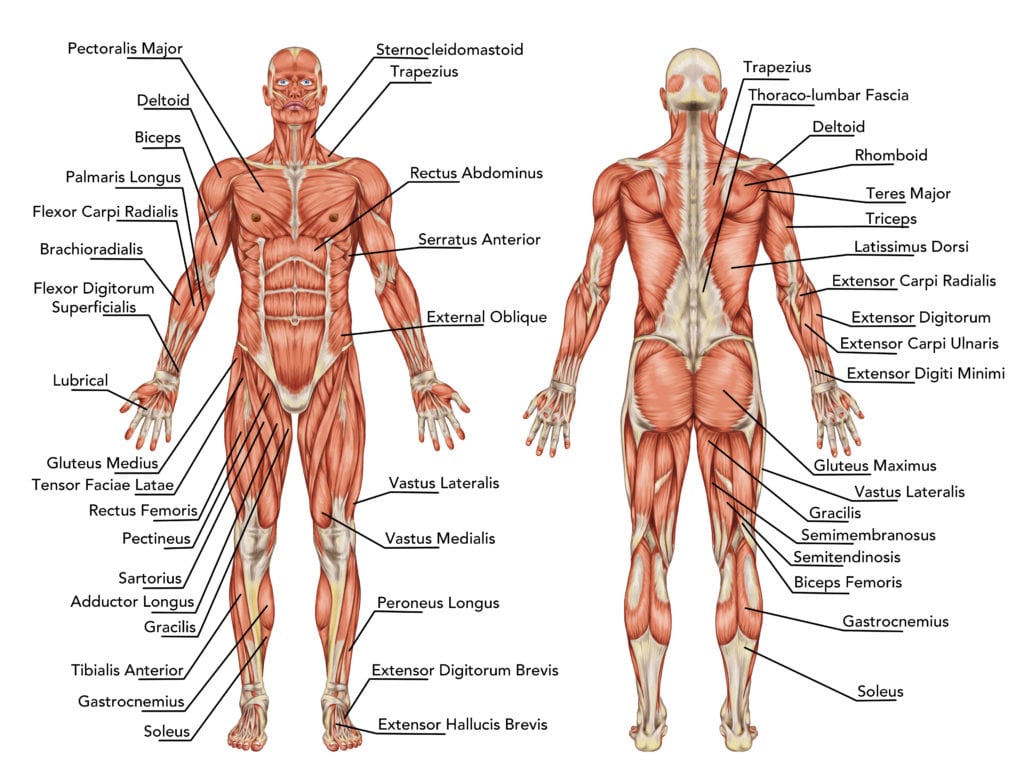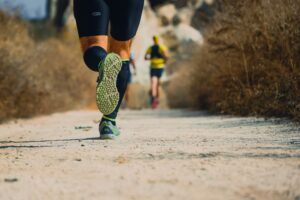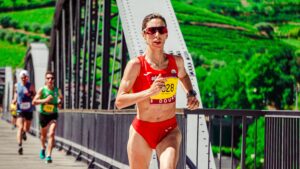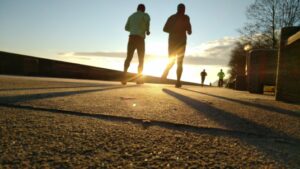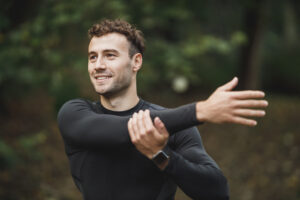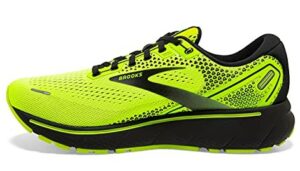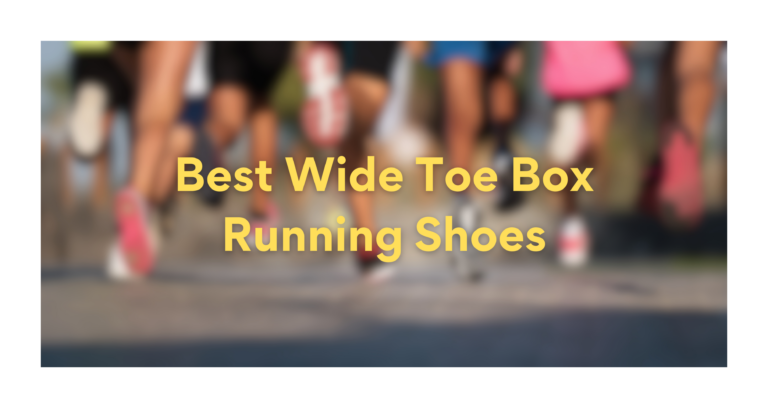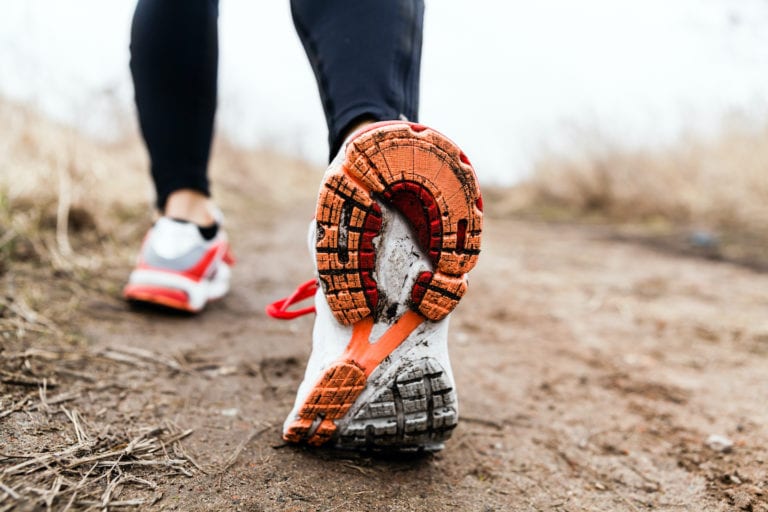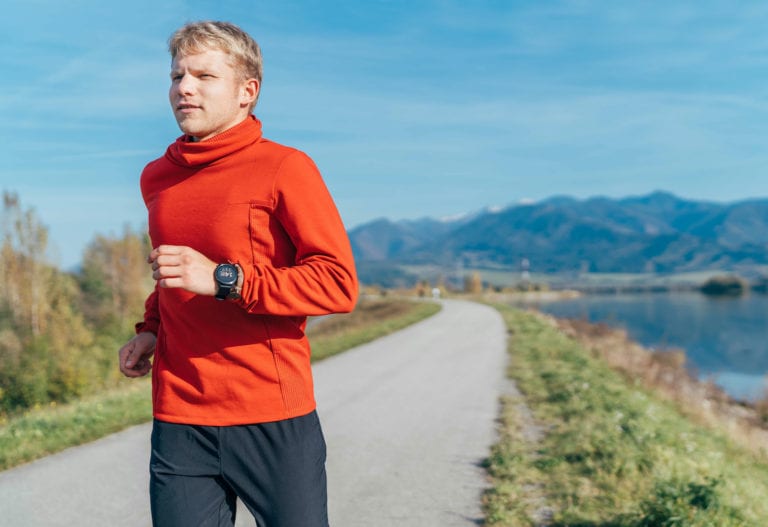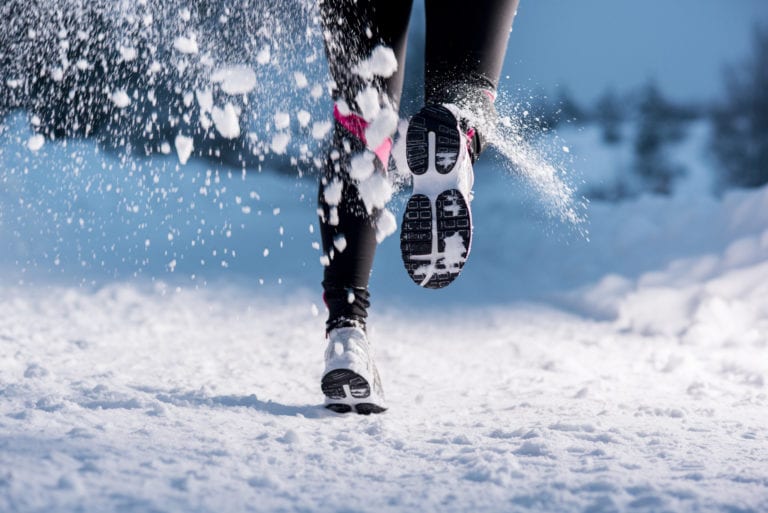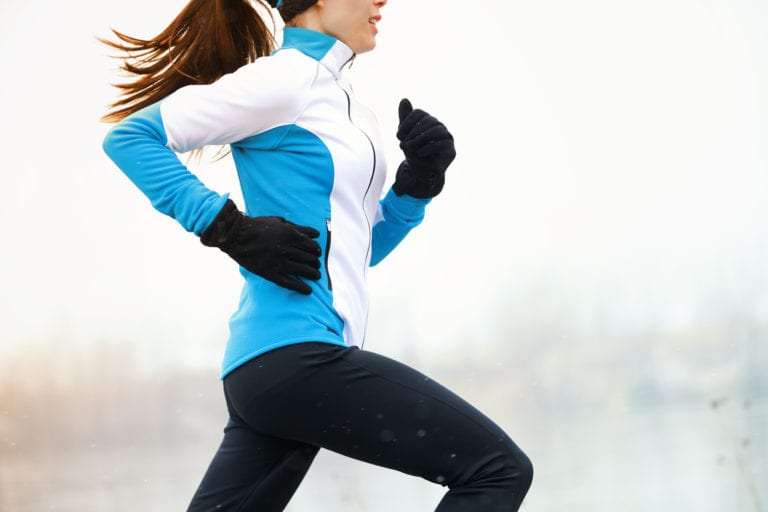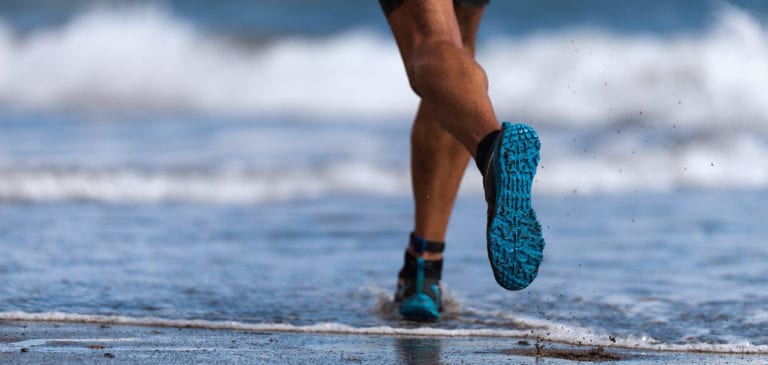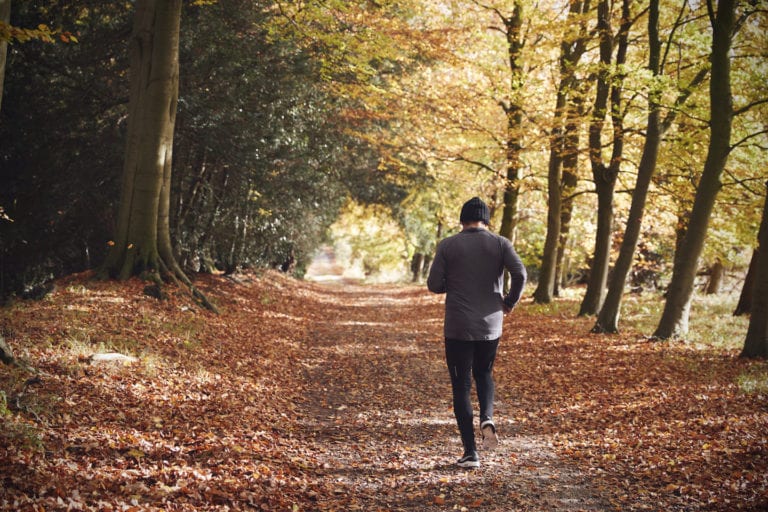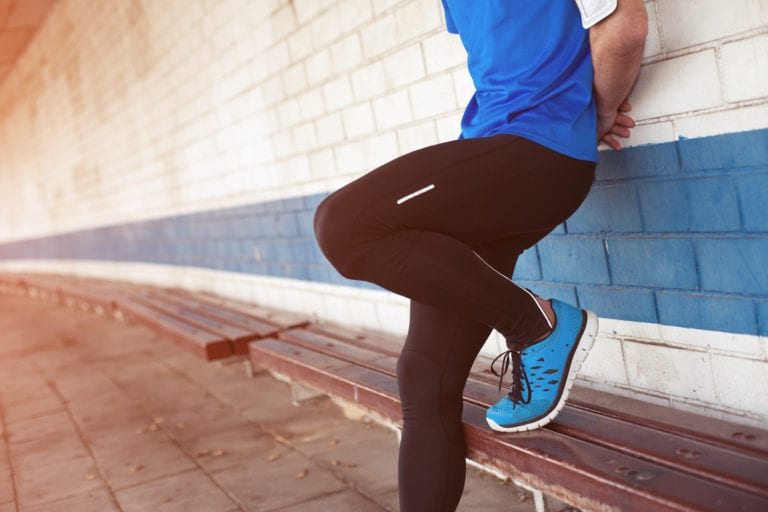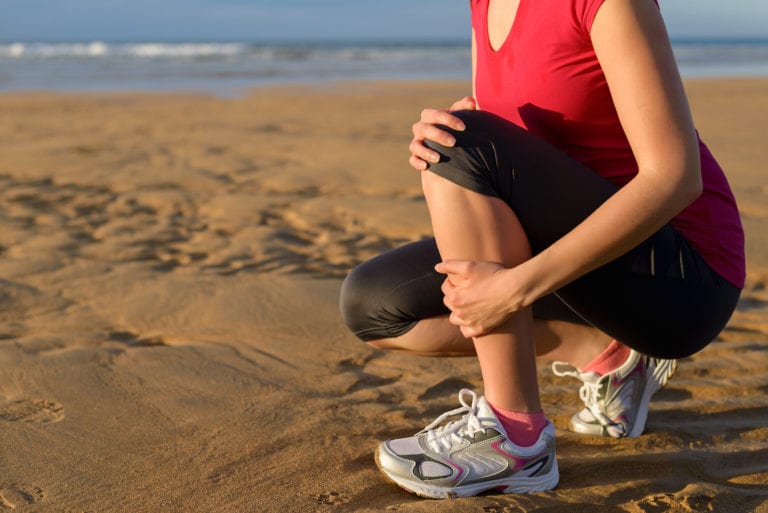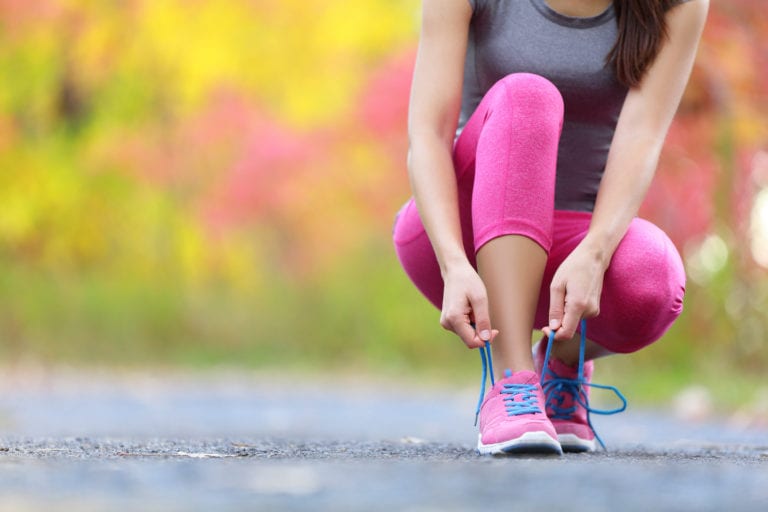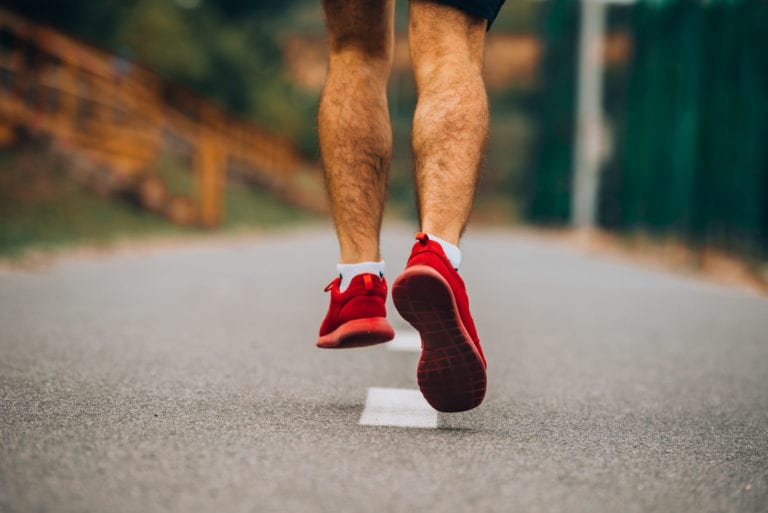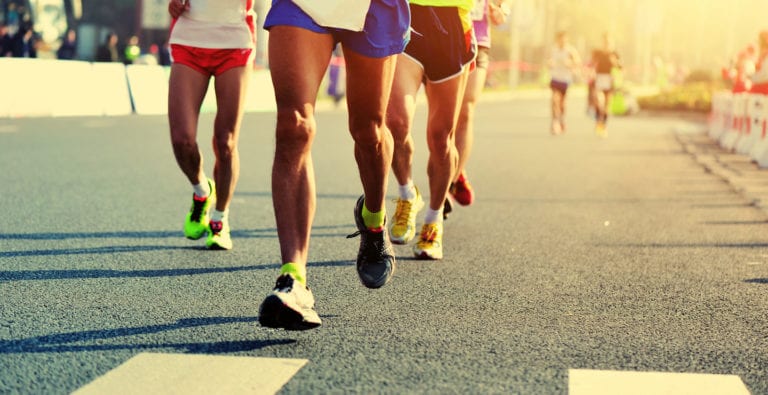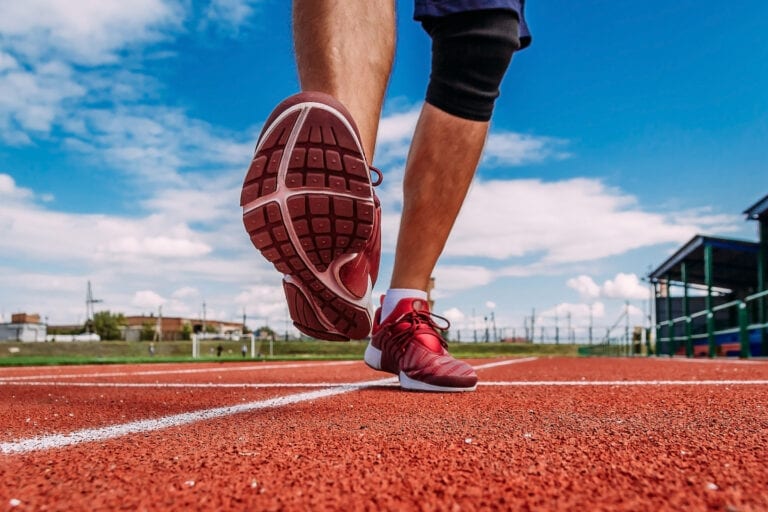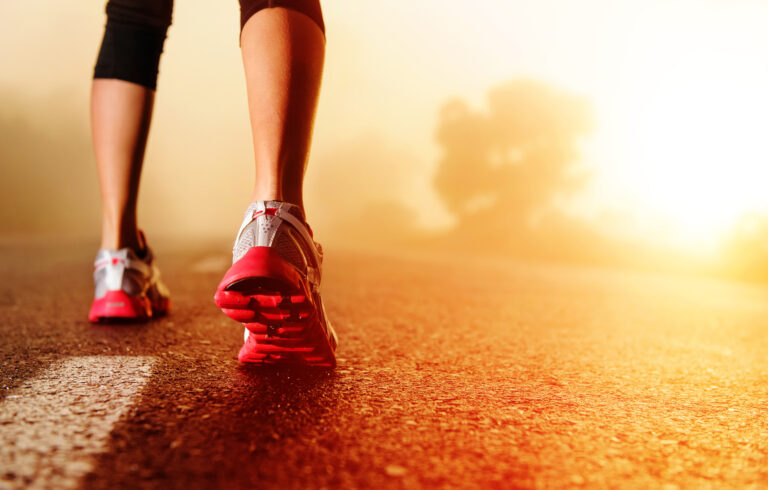The Muscular system and Running
Running is an excellent way to target many different parts of the body all at once. While not considered by most as a muscle-building exercise, it strengthens and tones a wide variety of muscles all through the body.
One benefit of running is that it utilizes a large number of muscle groups in the body, specifically the thighs, buttocks, and abs.
Some of the muscles that are used while running are the Quadriceps, the Hamstrings, the Hip Flexors, Abs, Calf muscles, the Tibialis Anterior, and the Peroneals.
If you are an avid runner then getting acquainted with the muscles that support this activity would help greatly in improving your performance.
Identifying and specifically including these muscle groups in your strength training workouts can give tangible results. Let’s look at each of these muscles in more detail.
What Muscles does running work?
The Abs or the Abdominal Muscles
The abdominal muscles are your core. A strong core is essential to the harmonious functioning of all the muscles.
Among the abdominal muscle groups, running (specifically) helps tone and strengthen the Rectus Abdominis and the Intercostals.
Rectus Abdominis is a set of muscles that run along the center of your abdomen muscles.
These are the long flat muscles on the sides of your Abs.
As for the intercostals, these muscles are found in between ribs.
These become greatly used during the heavy exhalation and inhalation that happens during running.
Abdominal muscles connect your upper body to the lower body and keep your posture erect. It has a marked effect on your gait as well.
Strengthening the upper and lower abdominal muscles allows you to keep proper form during running long distances and thereby prevent injuries.
Abs are also necessary to keep all the muscles working together. Most runners take extra time to specifically strengthen and workout their abs.
Hip Flexors
Every time you lift your thigh up high, the hip flexors get utilized. These are muscles that you can feel stretch when you move your thigh to your stomach.
There are primarily 5 hip flexor muscles. These are the Rectus Femoris, Iliacus, Psoas, Iliocapsularis, and Sartorius muscles.
A variety of major functional activities which include lifting or moving the leg forward, climbing steps, running, swinging the leg, etc. are made possible by the movements of these hip flexors.
They work in combination with the abdominal and the thigh muscles.
The Glutes
The glutes or as they are more accurately known- the Gluteals, are located in the buttocks.
Running has a direct effect on the glutes and you can specifically feel your glutes contracting when you sit up or run up a slope or push something with your leg.
The glutes include three primary muscles: the Gluteus maximus, Gluteus medius, and Gluteus minimus.
An interesting fact to add here is that the Gluteus Maximus is the largest muscle in your body.
That doesn’t mean that the other two are not important.
Both the gluteus medius and gluteus minimus are necessary to stabilize your body and legs when you run. You also use them when you sit, squat, and stand.
If you want to be a powerful runner then you need to have strong glutes that can help you propel forward.
Some runners do specific exercises with weights to strengthen their hips and glutes.
We will look at specific exercises for these muscle groups listed at the end of this article.
The Thigh Muscles
Here is where you will find your Quadriceps and Hamstrings.
Quadriceps muscles include rectus femoris, vastus lateralis, vastus medialis, and vastus intermedius.
Quadri means 4 in Latin and stands for the four muscles – 3 that attach to the kneecap from the femur and the rectus femoris that attaches from the hip to the kneecap.
Running naturally strengthens the quadriceps and adequately develops these muscles.
Now let’s look at the Hamstrings.
Hamstrings are found on the back of your legs similar to your bicep which gets contracted when you fold your elbow.
The hamstrings come into play when you stretch/ extend or contract your lower leg.
Usually, this movement is necessary for swinging the leg forward and backward.
Hamstrings are heavily used during running because of the constant extension and flexing of the lower leg.
The hamstrings bring the lower leg towards your buttocks. Hamstrings keep your leg from overextending.
It is not uncommon for runners to do special exercises to strengthen their hamstrings, as weak hamstrings can lead to sprains and muscle pulls while intense running.
The Calf Muscles
Just below and behind your knees define the calf muscles which are necessary for the movement of your toes.
You will find these muscles flex when you extend your toes.
You will find that experienced runners have very toned and shaped calf muscles.
Usually, your calf muscles will make themselves known by becoming sore when you go on long runs; the calf muscles do the major lifting work of the leg while running. Even though they are usually ignored, calf muscles have a great role to play in ensuring that the ankles and legs remain free from sprains.
Tibialis Anterior
When you move your toe up instead of down the anterior muscles (which run down the front of the shins) get used.
What is known as shin splints, which most beginning runners deal with, occurs due to the soreness of these muscles.
As you continue running the muscles become stronger and the pain vanishes.
The Peroneals
When you turn your toes out you find certain muscles near your heels and ankles getting stretched.
These are your Peroneus Longus and Brevis which run down the sides of the shins.
There is also the Peroneus Tertius which is mostly used for dorsiflexing which means the movement of backward bending of the ankle.
Upper Body Muscles
While running focuses primarily on the lower body muscles which get the greater intensity of the workout, the upper body also gets worked out; especially the biceps and the pectoral muscles.
The deltoids or the shoulder muscles also get a good workout as all the swinging of the shoulders is facilitated by these muscles.
Although it goes to say that it is mostly during sprinting that the upper body really gets a workout; the latissimus dorsi or the back muscles are also engaged along with the upper body muscles.
All runners are interested in 2 things – speed and stamina.
While stamina is built up by regular running, speed can be improved through special strength training exercises that can build the specific muscle groups used during running.
If you want to improve your running performance then studying the functions of these muscle groups and finding ways to strengthen them and build power would yield good results.
The primary focus of your strength exercise should be for your glutes, quads, hamstrings, abs, and calf muscles.
Strengthening these muscles is possible by using strength training exercises.
This would not only ensure that your overall running experience will be pain-free, but it can also prevent injuries and sprains that plague many runners.
Exercises to build muscle strength and improve running performance
Some exercises that help improve these muscles and help running performance are as follows.
Squats
Squats are power building exercises for the thighs, calves, and glutes. It can develop a lot of strength and power when used with weights.
Planks
Planks are great for the abdomen as well as lower back and arms. For runners, this exercise can help build their core strength.
This requires no weights but can be a difficult one to perform.
Forward Lunges
This exercise gets your hamstrings and quadriceps to generate power while propelling yourself forward.
The glutes are also helped greatly by this exercise. Holding a pair of dumbells or having a light barbell on your shoulder will give you the power to generate resistance.
Lateral Leg Raises
This gets the abdomen, glutes, and most importantly the hip flexors to strengthen.
For this you have to lie down on the side and lift your legs up sideways, parallel to the floor.
Doing it slowly and precisely is more important than doing many.
Bridge
This helps your lower back, abdomen, thighs, and glutes.
You lie on your back and then lift your hips off the ground by folding your legs backward and keeping the feet flat on the floor.
Keep this position for as long as possible.
Other helpful activities
Yoga
Yoga is not typically a muscle-strengthening activity, rather it helps stretch and keep the muscle nimble and relaxed.
Pilates
Pilates when done regularly can strengthen the core muscle groups. The abdomen, thighs, and the smaller muscles which are usually ignored get strengthened.
The effect of pilates on improving body strength and running performance is noteworthy.
Swimming
While it seems contrary to usual logic, swimming can help runners by relaxing the overworked leg muscles and ankles.
The upper body is primarily more in use in this activity and nicely balances out the fatigue and helps disperse accumulated stress.
It is an activity that complements running.
Finally, be sure to check out our latest reviews of the best wide toe box running shoes and best trail running shoes on the market right now!

